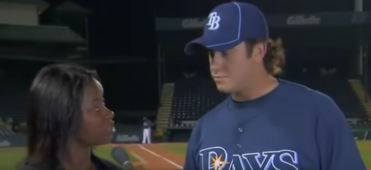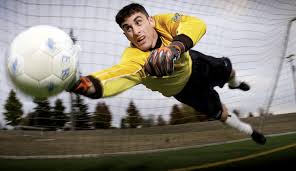
A motor loop is an ongoing action-reaction sequence. Its not an output like a thought or feeling but an ongoing process, like a wheel that continuously turns. If the intellect is a sniper rifle and the emotions are a bomb, then the moving center is a machine gun that constantly fires. It is driven by feedback from the muscles and cycles so fast that only the moving center sitting atop the spine can pull it off. If the cerebellum is damaged, or affected by alcohol, the motor loop slows to give tremors, like a shaky hand. Parkinsons is essentially when the moving center fails. When this happens the “higher” parts of your brain can’t compensate because they are too slow. The moving center has its own high-speed sense input that constantly monitors for spatial intrusions. Check out Mark Wahlberg catching a ball during an interview, or Evan Longoria doing the same.
People today ignore this “spider sense” but we all have it. Once when talking to someone my hand rose to catch an object that unexpectedly fell from a shelf above. Its there but if you don’t use it, it wont develop. Changing a feedback loop is like changing a production line in a factory – it happens faster if you plan the change. As a baseball player trains to catch sudden incoming balls, riders can train to respond to sudden motorcycle events. This means having a Plan B.
Have a Plan B

Plan A is the feedback loop the moving center is currently running, say balancing the bike as you ride along. Plan B is how this will change if something unexpected happens. A Plan B is necessary because things happen fast on a bike and there is no time to think. For example, if the car ahead screeches to a halt, do you swing left or right? It makes a difference because one way takes you to the side of the road and the other into oncoming traffic. Since it is better to swerve to the side, this is your Plan B but knowing it intellectually doesn’t make it happen in practice. There is no easy way to practice such events, so the answer is to “practice” in your mind. Just visualize the situation and imagine swerving to the side of the road. Sport psychology studies show that mental practice can improve motor skills, so basketball players who mentally rehearse an upcoming throw do better than those who don’t. On a motorcycle, imagine the car ahead stops and confirm your swerve response. Practice it mentally a few times then if it happens, that is the way you will go. Remember, the moving center is smart not dumb, but it learns by example not talk, even a mental example.
Don’t be an ostrich

Some people dont like to think about bad things that might happen, maybe feeling that thinking about a bad thing can cause it to happen. This is like being an ostrich with your head in the sand. Unfortunately ignoring problems doesn’t make them go away. This eyes tight shut approach is the opposite of the eyes wide open approach proposed earlier. The better approach is to fearlessly face the fact that bad things do happen by means of “What if?” scenarios.
“What if?” scenarios
A “What if?” scenario is:
- If this happens? Some unexpected scenario
- Then I do that! How you want to react.

The job of planning in the Scan-Plan-Act loop is to come up with accident scenarios and define your response. Once riding becomes a natural skill, part of you is free to think: If X happens, I will do Y. So if children are kicking a ball on the side of the road, you think what if the ball goes on the road with a kid after it? The Ready Reaction already given is a general utility Plan B that readies you to stop but what about the horn? Horn is good to warn the running kid to stop, so you add that in – left thumb ready over the horn. A horn blast can be the difference between accident or not. Readying the horn response makes it much faster, as your brain “factory” plans for it.

Even better than a Plan B is the ability to predict.
Predicting trouble

What can you do in a half a second? People take that long to gather their thoughts. Those who study human reaction time find it takes about a quarter of second just to see visual stimuli, let alone react. But in some cases they found that people had zero second reaction time! How is this possible? The answer is they predicted, in what is called a feed-forward reaction. For example, a soccer goalie cant react fast enough to save a penalty shot if he waits until the ball leaves the boot and then reacts. Yet goalies do save penalty shots when they predict which way the kicker will will go. To do this he watches the kicker not the ball. The human “super power” is not speed or strength, jaws or claws, but prediction. Prediction is the avoid-trouble skill.